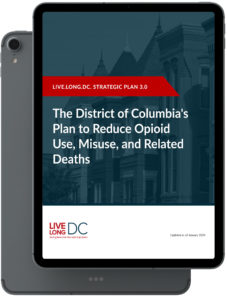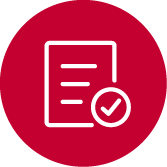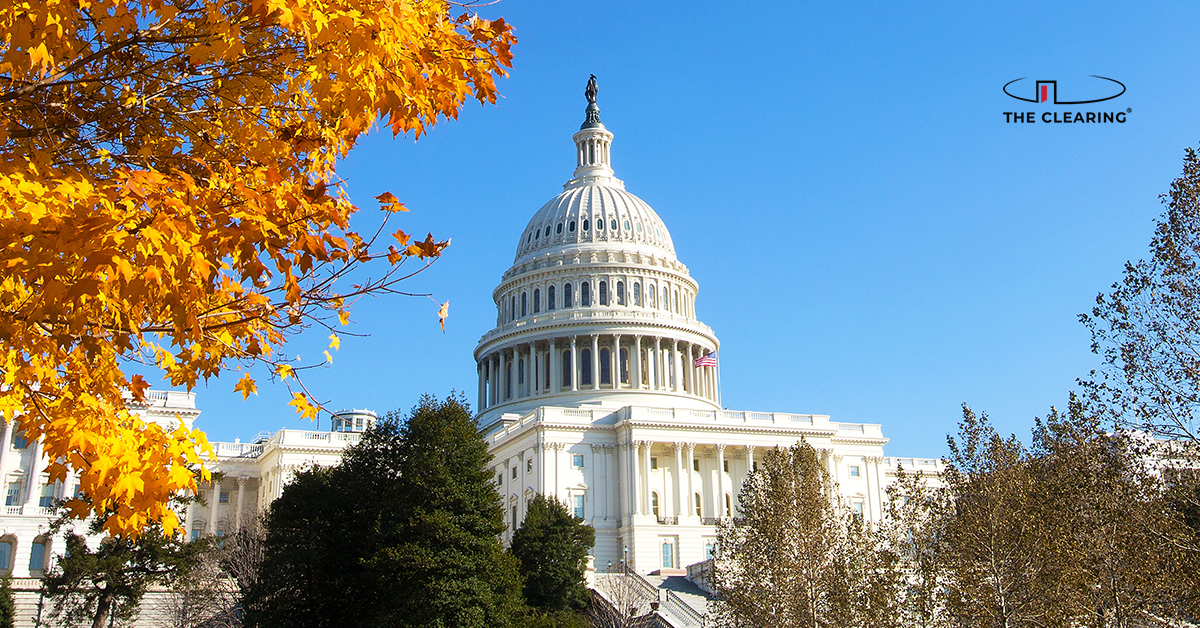This month, The Clearing and Washington, D.C., celebrate a major milestone: seven years of working together to combat the opioid crisis. To mark the occasion, consultant Emily Davis provides insight into the development of LIVE.LONG.DC., the District’s strategic program to combat opioid abuse, overdoses, and deaths, and what The Clearing is doing to ensure the plan remains relevant to new challenges, audiences, and stakeholders.
Opportunity
In 2017, Washington, D.C., faced a severe and rapidly escalating opioid crisis. To combat this public health emergency, D.C. Health and the D.C. Department of Behavioral Health (DBH) needed a comprehensive, coordinated response to unite government leaders, community stakeholders, and various public and private entities.
The primary challenge was to align these diverse perspectives and resources to create and implement an effective strategic plan to save lives from opioid overdoses. When initial efforts to align stakeholders proved difficult, city leaders knew they needed to adapt to a new approach. To develop and implement this new approach, D.C. leaders engaged The Clearing’s team of experienced strategists, project managers, and facilitators.
Solution
In October 2017, The Clearing began work with the D.C. Department of Behavioral Health and D.C. government leaders to develop and implement LIVE.LONG.DC.: Washington, DC’s Strategic Plan to Reduce Opioid Use, Misuse, and Related Deaths. Over the past seven years, this public-private coalition has grown from an initial convening of 40 people to comprise more than 1,000 stakeholders representing more than 150 organizations. Participants include local government and federal government leaders, public and private treatment providers, hospital leaders and physicians, community-based service providers, first responders, faith-based organization leaders, community organization leaders, neighborhood representatives, and others.
From the outset, The Clearing team developed processes to help stakeholders work together in new ways to achieve outcomes faster, including alignment on strategies, initiatives, outcomes, and data sharing and analysis to ensure the successful implementation of a strategic plan. And the work is ongoing.
We continue to design and facilitate quarterly engagements (26 and counting) between public and private sector leaders, bringing together stakeholders to share current data and identify the most critical actions each quarter. These in-person engagements help uncover shared goals and encourage working relationships across sectors, supported by monthly working group meetings with Opioid Strategy Group (OSG) teams that span the continuum of care. In addition, The Clearing continues to support updating the LLDC Strategic Plan, recently transitioning the coalition to LLDC 3.0. This ensured that the plan remained relevant and responsive to new challenges, such as the rise of fentanyl in the drug supply.

Impact
LIVE.LONG.DC. has had a far-reaching, positive impact in combating the opioid crisis in Washington, D.C. Throughout the program, the coalition has achieved several major milestones, including:
 |
Developing and committing to a comprehensive strategic plan and targets for decreasing the opioid overdose death rate |
 |
Establishing six Opioid Strategy Groups (OSGs) to align across the most essential initiatives |
 |
Results from this coordination between the public and private sector include:
|
To learn more about LIVE.LONG.DC, visit their website here. Additionally, if your organization needs help aligning stakeholders, developing a strategic plan, or undertaking a change effort, please reach out — our team would love to discuss your challenges and opportunities.






 The Clearing’s Employee Experience
Improvement model, adapted from Itam
& Ghosh, 2020, focuses on three objectives:
The Clearing’s Employee Experience
Improvement model, adapted from Itam
& Ghosh, 2020, focuses on three objectives: 














